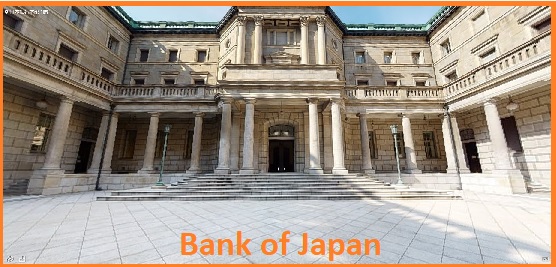
(Photo : BoJ)
Bank of Japan
- BOJ Governor Kazuo Ueda reaffirms commitment to raise interest rates if inflation hits 2% target, despite market volatility.
- Ueda attributes market volatility to fears of a U.S. recession and the BOJ's July interest rate hike.
- The BOJ ended negative interest rates in March and raised its short-term policy rate to 0.25% in July.
- The timing of the next rate hike is uncertain due to market volatility and global economic conditions.
The Bank of Japan (BOJ) Governor Kazuo Ueda recently reaffirmed his commitment to raise interest rates if inflation continues to sustainably hit the 2% target. This suggests that despite recent market volatility, the BOJ's long-term plan to hike rates remains intact. However, Ueda also warned that markets remain jittery and may affect the BOJ's inflation forecasts, indicating that the yen and stock price movements will be key in determining the timing of the next rate hike.
Ueda attributed the market volatility seen in early August to rising fears of a U.S. recession, stoked by the country's weak economic data. He also pointed out that the BOJ's interest rate hike in July led to a sharp reversal of one-sided yen falls. Despite these concerns, Ueda stated that there was no change to the BOJ's basic stance to adjust the degree of monetary easing if it became convinced that economic and price developments were moving as forecast.
The BOJ Governor's remarks suggest that the central bank may spend more time than initially expected in considering its next rate hike, but will stay on course to gradually increase borrowing costs from current ultra-low levels. Japan's short-term rates are very low. If the economy is in good shape, they will move up to levels deemed neutral, Ueda said. However, he also acknowledged that there was very high uncertainty on where rates will eventually rise to.
BOJ's Policy Shift and Market Reaction
The BOJ ended negative interest rates in March and raised its short-term policy rate to 0.25% in July, marking significant steps away from a decade-long radical stimulus program. In tightening policy in July, Ueda said the BOJ would raise rates further if inflation remains on track to durably hit its 2% target in the coming years, as projected by the board.
However, the surprise July rate hike and Ueda's hawkish signal triggered a market rout, forcing his deputy to offer dovish reassurances that no hikes would come until markets stabilize. Ueda said volatile moves in the yen could affect the BOJ's median inflation projections, in which case the board would debate whether a policy shift was needed. Even if yen moves do not affect the BOJ's median forecasts, they could warrant changing policy if they posed big enough upside or downside risks to those projections, he said.
The latest poll by Reuters showed a majority of economists expect the BOJ to hike rates again this year, but more see the chance of it happening in December rather than October. This shift in expectations is influenced by a combination of factors, including the recent market volatility that followed the BOJ's July rate hike, concerns over global economic growth, and the potential impact of yen movements on inflation projections.
Global Economic Context and BOJ's Decisions
In the broader context, Japan's core inflation accelerated for a third straight month in July, but a slowdown in demand-driven price growth could complicate the central bank's decision on further interest hikes in the coming months. The nationwide core consumer price index (CPI), which excludes fresh food items, rose 2.7% from a year earlier, faster than a 2.6% climb in June. It matched the median market forecast and put the inflation rate at or above the central bank's 2% target for the 28th straight month.
However, the core core index, which excludes fresh food and energy costs and is closely watched by the Bank of Japan (BOJ) as a key gauge of broader inflation trends, rose 1.9% after increasing 2.2% in June. It dipped below the key 2% line for the first time since September 2022. This mixed picture complicates the BOJ's decision on further rate hikes, as they are likely to consider whether the recent slowdown in inflation, particularly in non-energy items, suggests a need to delay hikes or adjust their policy stance.
The global economic context influencing the BOJ's decisions includes the uncertainty around U.S. interest rate cuts, which markets are anticipating. While the BOJ is signaling its readiness to hike rates if domestic conditions allow, it is also mindful of global factors. The U.S. Federal Reserve's potential rate cuts could impact global financial conditions and investor sentiment, affecting Japan's export-driven economy and the yen's value. Given the interconnectedness of global markets, the BOJ's policy decisions are not made in isolation and must consider how actions by major central banks, like the Fed, could affect Japan's economic outlook and inflation targets.
In conclusion, the Bank of Japan's stance on interest rates is a delicate balancing act. On one hand, it is committed to raising rates if inflation continues to hit the 2% target sustainably. On the other hand, it is cautious about the potential impact of market volatility and global economic conditions on its inflation forecasts. As such, while the BOJ remains on course to gradually hike rates, the timing of the next hike is uncertain and will depend on a range of domestic and global factors. This delicate balance reflects the complex interplay of domestic and global economic conditions that central banks must navigate in their policy decisions.
* This is a contributed article and this content does not necessarily represent the views of btin.co.in









